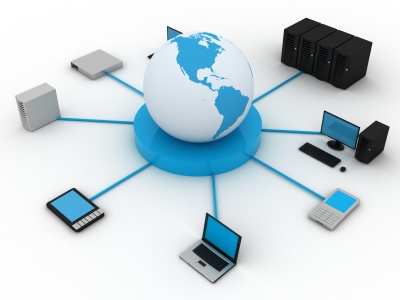With today’s technology, many businesses and individuals have gone wireless, from cellular phones to personal digital assistants (PDAs), and many other various technologies such as wireless computer mouse and keyboard, GPS devices, garage door openers, and most important of all, wireless networking.

Wireless Networking
If you love being online to chat with your friends in Facebook or in Twitter, send email messages to your friends from across town or from the other side of the world, without the hassle of connecting your desktop or notebook to a modem or a router, then why not set yourself up a wireless network. Or if you just wish to experience the power and capability of wireless networking, there are a few places that you can visit to test or try it out like Starbucks, Barnes and Noble, McDonald’s, just to name a few.
Advantages of Using a Wireless Network
With a wireless network, you don’t have to worry about situating your computer to a specific desk at your home or office. It gives you total freedom to roam around your house and still browse the Internet and engage in all kinds of online activities such as audio-video conferencing, media streaming, playing online games and many more. You can forget about messy wiring and hard-to-follow set up procedures once you decide to jump ship from the traditional modem and phone line methods of connection.
Wireless Service Technologies
- Mobile Broadband. This wireless technology adverts to wireless Internet connections with blazing speed and services that are intellectually conceived for use in fanciful places. Examples of mobile broadband technologies are EV-DO, HSPA, LTE, and WiMax, which are mostly phone-based engineering. Due to the amazing power of this technology though, it is also being incorporated progressively into automobiles, laptop computers, and public transportation.
- Fixed Wireless Broadband. This particular high-speed Internet access is powered by radio signals and not cables. Hence if you are not close enough to the source, you will not receive any signal and you will lose your connection or you will not have any at all. Several packages of this wireless service are made available to residential and business patrons so this technology can be considered as one of the most commonly used resources existing today.
- WiMax Broadband Wireless Internet. This prevailing form of wireless networking is engineered to provide broadband connectivity to the World Wide Web in some areas and remote locations that are not serviced by cable or DSL technologies. Think of it as a gas lamp in a house built and hidden away in the mountains that has no electricity. A gas lamp may work and perhaps the most suitable tool for survival, but it is still best to have electricity to be able to accomplish more tasks such as cooking, doing laundry, watching television, even at night time.
- WISP (Wireless Internet Service Provider). This system is designed to mainly provide wireless network service to the public in the form of wireless hotspots and is often located in airport cafes, restaurants, bars, and public libraries. You may have used this technology already at one point or in many instances if you are a frequent flier and an avid coffee drinker.
Wireless Network Monitoring
Since wireless technology is quite popular and readily available in many areas, individuals and businesses tend to make it secure to eliminate the free sharing of their bandwidth with others. To ensure that they have the proper security and protection setup, they utilize various monitoring tools. Here are some of the popular tools associated with wireless network monitoring:
CommView® for WiFi. This program is a robust wireless network monitor and analyzer of Internet traffic generated through 802.11 a/b/g/n networks. Its main application is to capture every packet of information and analyze whether the wireless network is being overused and it can also determine whether there are intruders in the network, thus allowing the network administrators to boot them out by reconstructing the TCP sessions. CommView® for WiFi 1 user license is available for purchase at $499, but you can also purchase a time-limited 1-year license for $199.
Servers Alive. This application offers users who still run their computers on Windows 2000 and XP an end-to-end networking tool. It is quite easy to use and its alerts represent some of the results in wireless usage security today in graphical interface. Servers Alive standard edition license will cost you $279 while an enterprise edition license runs up to $419.
BlueAuditor. If you are using Bluetooth technology as a means of connecting to the Internet, this program is the one you need. It tracks any Bluetooth device that tries to connect to your wireless network between the range of 1 to 100 meters and it also has the ability to display the key information about the devices that it finds and their activities. The best thing about this program is its low price of $19.50 and you can even try it for free for 15 days.
Wireless technology is here to stay and with the many wonderful tools available for consumers, it will just continue to grow in popularity and soon every Internet user will be browsing the World Wide Web with ease and confidence in mind knowing that their network is secure and safe and free from any intruder’s attack.
Sources:
http://www.tamos.com/products/commwifi/
